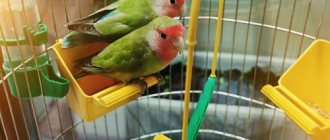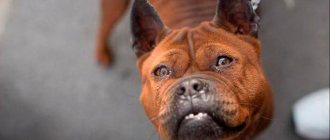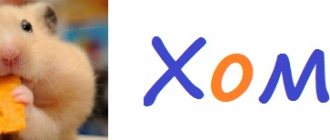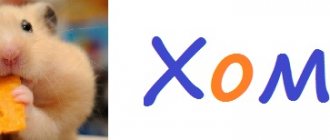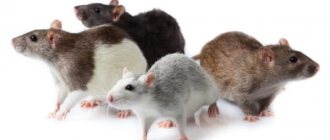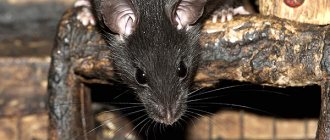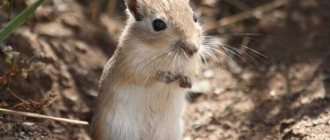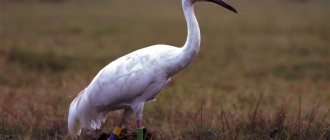- home
- Chinchilla
- Character and features
07/26/2019 Chinchillas are cute creatures, the size of which does not exceed 25–35 cm. Animals that love to be taken care of and do it very carefully. In return, the animals give tenderness and affection to the owner.
In this article, breeders, as well as lovers of these animals, will learn facts about chinchillas and get to know the animal better.
History of domestication
An interesting fact about chinchillas is that these animals got their name from Chincha, the name of a Peruvian tribe. They lived for the first time as pets at home with Indians who lived in the chinchilla habitat.
The beginning of the period of distribution of rodents is considered to be 1919, when Matthias F. Chapman bought one animal from a local resident and assembled an expedition to get a few more individuals he liked.
During the three-year expedition, they managed to catch 12 chinchillas, one of which, unfortunately, died during transportation, and another one increased the number of animals on the ship, giving birth to offspring.
To make the animals feel comfortable on the way, people used a wet cloth and ice for the cage with the animals.
№12
As we noted earlier, these are mountain rodents. In the mountains, sleeping conditions are not always the most comfortable. Therefore, chinchillas can be found sleeping in amazing positions. They may fall asleep lying upside down in a crevice, lying on their back, or literally standing on their head. The same can be observed in a cell. The animal retains its instinct, which is why it can sleep in amazing positions even in a comfortable corner in its cage.
Biological features
Interesting facts about chinchillas can also be found in their biological characteristics.
- Chinchilla is a timid animal that tends to hide at the sight of an uninvited guest. That is why information about them, for the most part, is obtained from studies of tame animals.
- These animals have their own characteristics of the body and life, since their original habitat cannot boast of the variety and quantity of food suitable for these rodents, as well as the ability to organize a shelter.
- These rodents prefer to live in packs.
- Female chinchillas play a dominant role in the life of the pack.
- Females, unlike males, are larger and more active.
- Rodents can sleep upside down, and spend most of the day doing this.
- Thanks to their thick undercoat they have soft fur.
- These rodents have virtually no odor.
- They can feed on insects.
№6
One of the main evolutionary features of the chinchilla is its thick blood. It is thicker than that of humans and most other animals. This is due to the fact that there are more red blood cells in their blood. The more red blood cells there are, the more oxygen they can transport, which allows chinchillas to survive at high altitudes.
Interesting for children
A chinchilla can be a fun object to study for a child. Here's what you can tell your baby about this cute animal:
- The teeth of these pets grow throughout their lives, and the animals are born with 8 teeth at once.
- Freckles may appear on the ears of rodents, which is due to the presence of the gene responsible for the beige color in the animal's DNA.
- These animals do not like to be dirty and clean themselves by bathing in the sand. The ears are protected from grains of sand by membranes located in them.
- The rodent's hind legs grow slightly slower than the front legs.
- The pet has 5 toes on the front legs, while the hind legs have 4.
- While eating, the animal crouches and holds the tasty treat with its front paws.
№2
Their bodies are covered with unique fur. It is 30 times softer than human hair. Moreover, from one follicle (hair follicle), up to 50-80 strands can grow. Thanks to this, their fur is so dense that fleas or other parasites simply cannot settle in it. Naturally, such density also has its drawbacks. In order to cleanse its fur of the oil secreted by the body, the animal needs to regularly take dust baths.
Features of chinchillas
You can learn interesting things about chinchillas by studying the characteristics of this animal.
Hearing
Chinchillas have excellent hearing, which easily surpasses human hearing.
Due to the structure of the hearing aid and the presence of two auditory drums of impressive size, these animals can hear frequencies that are called ultrasonic and are inaccessible to human perception.
Due to the inability of a person to perceive certain sounds, situations often occur when a pet heard something suspicious and frightening and hid, but the owner could not find the reason for this.
Dream
Chinchillas can sleep in both normal and surprising positions.
Common sleeping positions include standing upright or on your side
An unusual, but quite logical placement is sleeping upside down. These animals carry through generations the so-called natural memory of life in conditions where it is necessary to camouflage and hide even during sleep. We must not forget that this position may also be due to its relationship with bats.
Sound
These animals have a rich supply of sounds, which they reproduce without undue embarrassment to attract attention to their person. Among the sounds they produce, the cries of various birds and animals are especially frequent, parodies of which these animals produce extremely skillfully and talentedly.
Digestion
These little animals belong to the type of animals in which the digestion process occurs repeatedly. The first stage occurs in the same way as everyone else, but the second, called coprophilia, occurs during the removal of already digested food from the body and its reabsorption.
These pets eat while standing on their hind legs, while the tasty food is in their front legs.
Socialization
These rodents are animals that are accustomed to living in groups and interacting with their own kind.
Since such a pet has a high level of sociability, it will be lonely to live alone without its fellows. That is why experts recommend in advance, even before purchasing a chinchilla, to think about the possibility of purchasing a second pet as a companion for the first.
Natural habitat
These small furry creatures are found in the wild in South America in mountain crevices on the slopes of the Andes. They live at altitudes of four kilometers and above. Confidence in moving along vertical mountain slopes is given to them by the physiological characteristics of their paws - they are naked with fairly thick pads. Thanks to their dense fur, in their natural habitat they can easily cope with the cold in the mountains.
The thin high-mountain air of the Andes does not prevent rodents from breathing calmly. Due to the structural features of the chinchilla’s circulatory system, red blood cells carry a lot of oxygen throughout the small rodent’s body, even more than in a large rabbit.
In nature, rodents have many enemies - birds, snakes, skunks, wild dogs and cats. Over the course of their evolution, chinchillas have acquired an interesting and unusual defensive reaction, characteristic only of these animals. If they are attacked by an enemy, the chinchilla “sheds its fur.” While in the teeth of a predator, the tailed rodent throws away large tufts of its skin, thanks to which it remains alive.
These funny animals have another interesting protective property to scare away their enemies. If they see a threat to their life, they rise on their hind legs, begin to growl, and then shoot at the enemy with a stream of caustic urine. Then the chinchilla can also dig into the offender with its sharp teeth.
Where do they live?
The historical homeland of the chinchilla is South America. Colonies of animals lived almost along the entire western coast. During the period of active trapping of fur-bearing animals, hunters burned vegetation to get to their burrows and shelters. A significant decrease in the number of animals, as well as the destruction of some plant species, reduced the habitat of the genus.
Living conditions in the natural environment
The rocky terrain of the Andes, which is inhabited by chinchillas, is not rich in vegetation. Most of the territory contains flora typical of desert areas. You can also find dwarf shrubs, succulents (plants that can accumulate moisture), lichens and some cereal plants.
Almost the entire year, strong winds are observed in this territory, and precipitation is extremely rare, so such climatic conditions cannot be called favorable. But chinchillas have adapted to living in this area; they receive all the moisture they need for life from plants that accumulate liquid and dew.
Wild chinchillas are nocturnal animals
Appearance of a domestic chinchilla
Fast and fluffy is the most accurate and truthful description of this animal. The chinchilla is related to guinea pigs and porcupines.
With short front legs (which are used to hold food while sitting upright) and long, muscular hind legs, this rodent resembles the long-eared chinchilla rabbits.
Chinchilla hair is about 40 millimeters long with gray, white and black stripes. It may appear bluish or silvery gray. These creatures are fleet-footed. The chinchilla may look bulky, but behind its thick, silky fur hides the physique of an amazingly athletic rodent!
Large black eyes look at the ground and his bushy tail twitches. The short front feet have five toes, and the narrow hind feet have three toes and a vestigial toe with stiff bristles surrounding a small, flat claw. The bristles can help provide traction on any surface. Females are larger than males.
Having a thick coat and not being able to sweat, chinchillas can easily overheat in captivity. Its only cooling mechanism is to pump blood through its large ears, which have less hair.
general description
Chinchilla rats live in the Andes - from Peru to Chile, found on rocky slopes up to an altitude of 5,000 m above sea level. The lifestyle is poorly studied.
The body length of chinchilla rats is 15-25 cm; Outwardly, they really resemble rats with pointed, elongated muzzles, large eyes and ears. The limbs are low. The front paws have 4 toes, the hind paws have 5. On the toes of the hind paws there are “brushes” of long, hard hair, similar to those found in eight-toothed, chinchilla and combed mice. The claws are dull and weak. The tail is shorter than the body, well furred. The fur is brownish-grayish, long, thick and soft - hence the name chinchilla rats. 30 teeth.
Recent molecular studies (2001) have shown that chinchilla rats may be closer to degus, nutria and tuco-tucos than to chinchillas.
Is it possible to train a chinchilla to go to the litter tray?
Chinchillas are very smart and learn quickly. It is very easy to train them to go to the litter box: place it in the cage in the place where the animal usually goes to the toilet, you need to remove all the bedding and wipe the floor of the cage with lemon. The chinchilla will immediately understand what needs to be done.
Tray
The second method: at first allow the animal to go to the toilet on the entire bedding at the bottom of the cage, but gradually reducing it every day. When a small patch remains, replace it with a small tray. The main thing is to change the bedding every day so that the cage is always dry.
External signs
- Chinchilla body length - 22-38 cm. Tail - from 9 to 17 cm. Whiskers (vibrissae) - 8-12 cm.
- The weight of an adult does not reach 1 kg. – on average 0.5 kg, more than 0.8 kg. they won't grow. The female usually weighs more than the male.
- Rounded head and short thick neck.
- The eyes are round, black, and the pupils are vertical.
- The length of the rounded ears is up to 6 cm. The ears have special membranes to protect the ears during sand baths.
- The fur all over the body is thick, and the hairs on the tail are coarse.
- The fur color is most often gray, but there are other varieties (black, white, beige, brown, pink, purple and others). The abdomen is white.
Chinchillas are crepuscular
It is often mistakenly believed that the chinchilla is a nocturnal animal that is most active during the hours of darkness and will not be very active during the day. However, chinchillas are actually crepuscular, meaning that their peak activity hours are at dawn and dusk, at dusk. Too much light and sun during the day can irritate your pets, so try to keep your chinchilla's cage somewhere that is not in bright, direct sunlight.
Article on the topic: How and how much chinchillas sleep, features of their sleep patterns
Chinchillas can walk on their whiskers!
While chinchillas' eyes are relatively large and well suited for seeing in dim light and twilight, their retinas are actually not very well developed, and the chinchilla's long whiskers really help them navigate around the world. The nerve endings in their whiskers are very sensitive, just like those of a cat, and can provide feedback to chinchillas about their environment.
Looking for free advice for your rodent? Click here to join the UKs favorite pet community - PetForums.co.uk
How chinchillas were domesticated
When the demand for the luxurious fur of these animals throughout the feast reached unprecedented proportions, many people began to think about raising chinchillas in captivity. But all attempts to domesticate furry creatures failed, because no one knew what conditions they needed for reproduction, or even how to properly maintain them. And only the American Matthias Chapman managed to successfully breed these animals and establish the first chinchilla farm.
Breeding chinchillas on a farm
It is noteworthy that initially Mr. Chapman did not have such a goal. He had never worked with animals, since he was a mining engineer, not a breeder, and did not even know about the existence of chinchillas. Matias was working in a mine in Chile, and one day a local Indian approached him with a strange animal in his arms. The interested engineer began asking the visitor about his pet, and he offered to buy the rodent. The American didn’t even hesitate, he really liked the fluffy animal, and without hesitation paid the Indian the required amount.
Diet
Chinchillas are quite delicate animals, and their diet at home must be selected very carefully. What do chinchillas eat? The main food for them is dry hay (it must be properly dried, with a pleasant herbal smell).
In addition to hay, the chinchilla is fed with special food, and the following are suitable complementary foods: cereal flakes, dried leaves, herbs or roots, corn and flax seed, dried pieces of vegetables. These animals happily gnaw on branches of fruit trees and bushes: apple, cherry, raspberry or currant trees. The main thing is that everything is dry and free of moisture.
Chinchillas need to be given water. Make sure the water is always fresh.
How long does a chinchilla live in the wild, and how long at home?
In the wild, the life expectancy of an individual is about 5 years, but most likely such a low life expectancy is associated with poaching due to valuable fur and predators.
On average, it is believed that a chinchilla lives up to 15 years in the wild. In the house - up to 15-20 years, provided the animal is properly cared for.
A certain percentage of chinchillas live up to 25 years, and some individuals live up to 30 years.
Groups of chinchillas are very social and compassionate
Chinchillas do not thrive when kept on their own and need to live in pairs or small groups to be happy. Chinchillas are different from most other rodent species because of the way they demonstrate their care for their children and for each other; male chinchillas will not try to eat the litter, and in fact even a child will sit on his own and other people's offspring!
Article on the topic: Chinchilla size: table of weight and height by month from babies to adults
If a chinchilla mother cannot produce milk to feed her kits, it is not uncommon for another unrelated woman to take in the babies and care for them as if they were her own. Chinchillas are also very loving and friendly with people when properly socialized, making them very attractive and rewarding pets.
Chinchilla teeth never stop growing
Like most rodents, a chinchilla's teeth are constantly growing and can grow as much as a foot within a year! To keep their teeth at a safe level, they need constant access to things that they can gnaw and chew to matte their teeth, and will chew most things they come across! It is important to ensure that you have a chinchilla protecting any rooms that you allow your pets to lose in, as they will also chew on hazards such as electrical cords if they can get to them!
Article on the topic: The fastest turtle in the world
